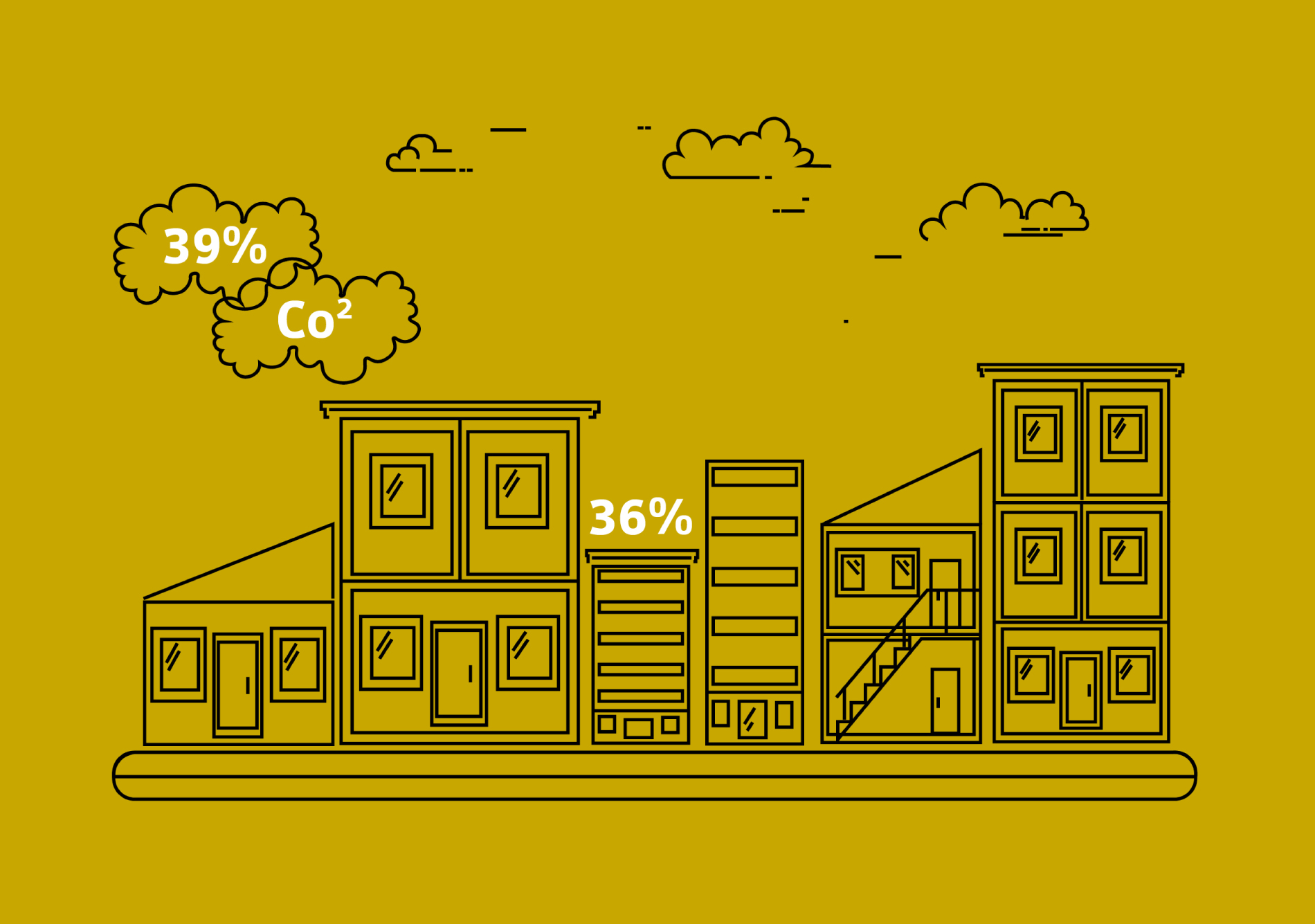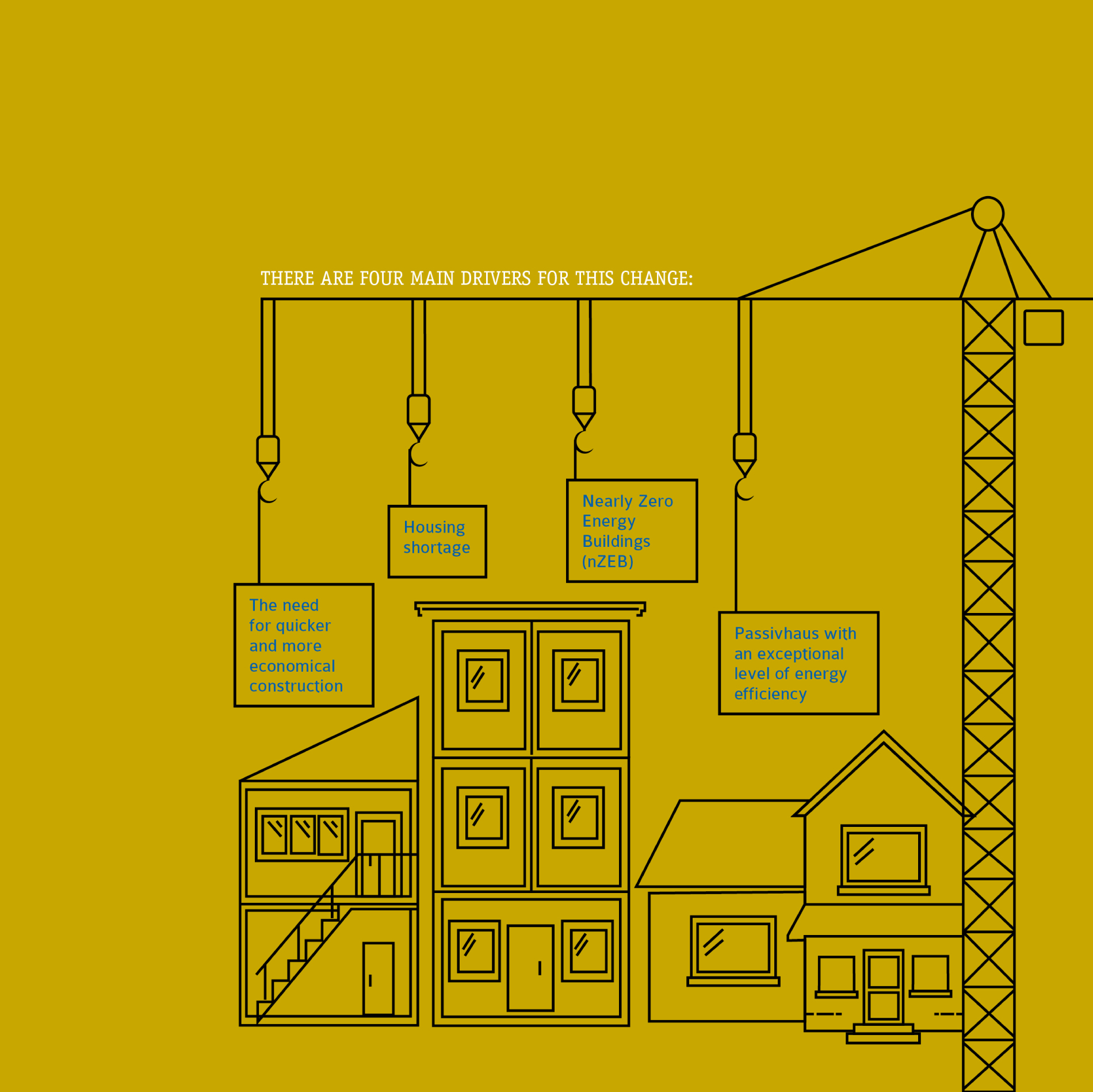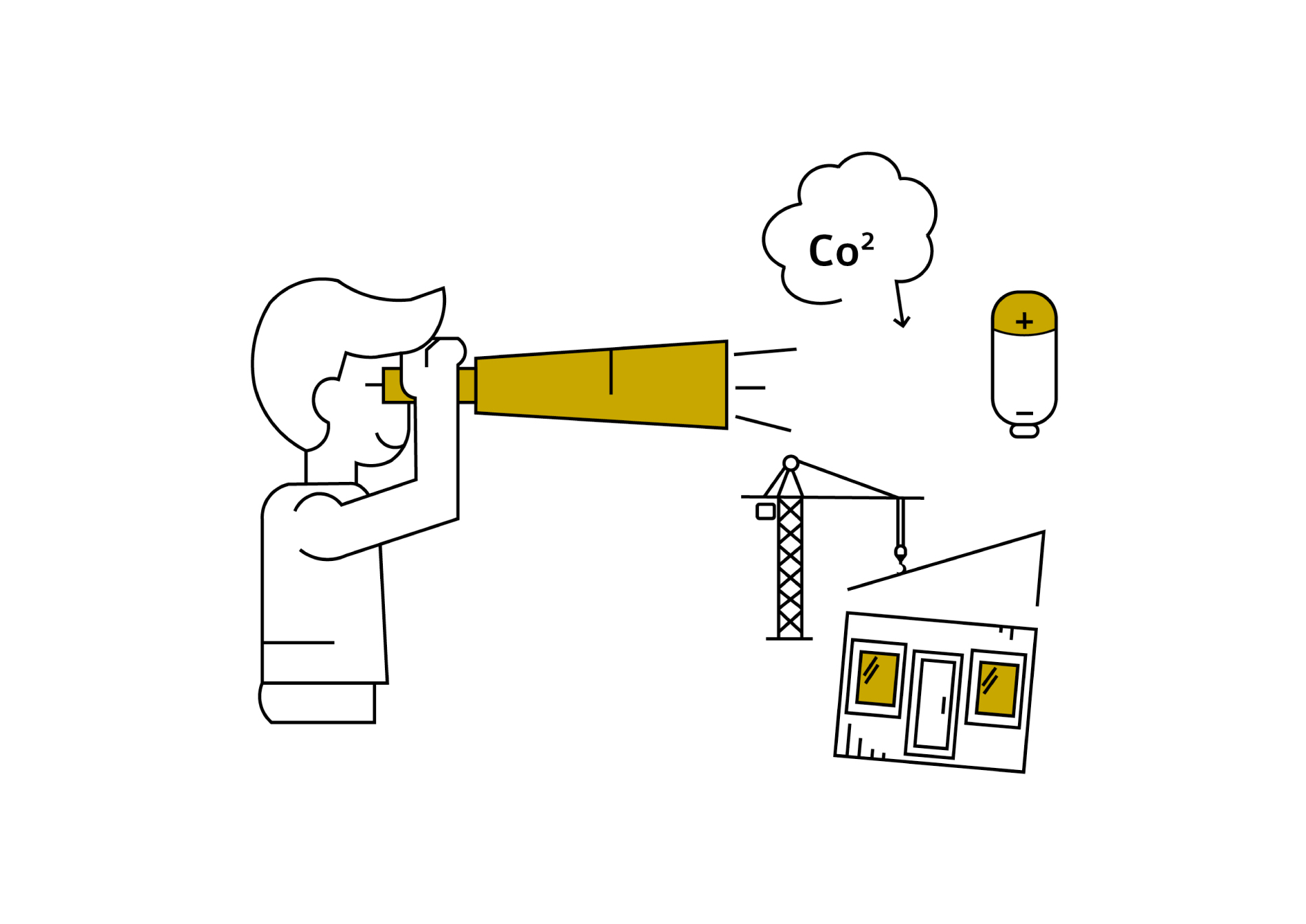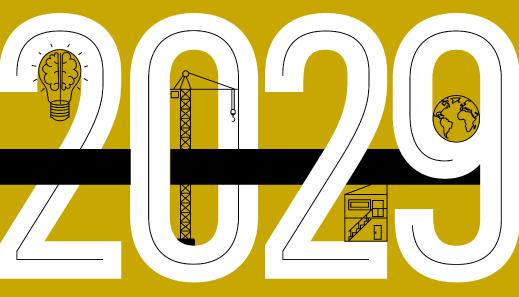
Entering a new decade is always exciting, especially when it comes to thinking about all of the big changes that will take place. We recently teamed up with Dr. Stephen Finnegan, lecturer in Sustainable Architecture at the University of Liverpool to envision how building design will change by 2029.
As growing climate concerns and related government initiatives influence the building industry, it’s important to consider the changes we in the industry need to be thinking about in the coming years.
According to population projections, 340,000 new homes will be needed in England each year until 2031. But it won’t be as simple as continuing to build homes in the same fashion the industry has been building them. The industry will have to adapt to meet the target set by the government to eliminate greenhouse gas emissions by 2050.
Every sector has an obligation to reduce its carbon footprint but the building industry will come under more scrutiny than others considering almost half of all emissions (45%) in the UK are linked to construction, operation and maintenance of the built environment. What’s more, 78% of people in the UK believe that the environmentally sustainable performance of a building is important when choosing a new home.
What kind of trends can we expect to see in the coming decade as the industry strives to provide homes that are both high quality and energy-efficient?

Going modular
By December 2020 all new housing will need to be Nearly Zero Energy (nZEB) which will pave the way for achieving Net Zero Carbon (NZC) buildings. Modular (or ‘prefabricated) buildings will become more popular as we work towards these goals and present an opportunity to rectify the housing shortage quickly.
A modular building is pre-built in sections which are then put together on-site. This is less time and labour intensive and generates less material waste than a traditional build. Off-site construction can reduce waste generation by 90% according to the Waste and Resources Action Programme (WRAP).
A £90 million initiative has been launched by a collective of organisations including Homes England, Urban Splash and Sekisui House to increase the number of modular homes built in the UK. It looks highly likely that we’ll be inhabiting modular homes and offices in years to come.

Green growth
A greener approach to the building materials the industry uses and how it sources them will be an important step towards nZEB status. The industry will benefit from adapting to materials with practical and ecological benefits. Virgin concrete is a commonly-used material that requires a lot of energy and natural resources. Cross-laminated timber is a more environmentally friendly alternative that could become the go-to replacement for virgin concrete.
Better energy performance can be achieved in buildings that use heat pumps and mechanical ventilation heat recovery (MVHR) systems. These solutions can also help to reduce household bills, making them favourable to the building industry and home owners.
Renewable will continue to grow in popularity and innovations like battery storage will smooth out the fluctuations in energy supply from natural resources such was water, solar and wind. Buildings will also become smarter with the addition of sensors and devices that enable intelligent monitoring and control heating, cooling, lights and water.
It’s vital that the development of the built environment has minimal impact on the natural environment and we’re proud to be playing a part in facilitating this change. The environment plays an integral role in how we conceive our products and that’s why they’re designed to improve energy efficiency in the built environment and help building owners and tenants reduce their environmental footprint while maintaining comfortable and liveable indoor spaces.




